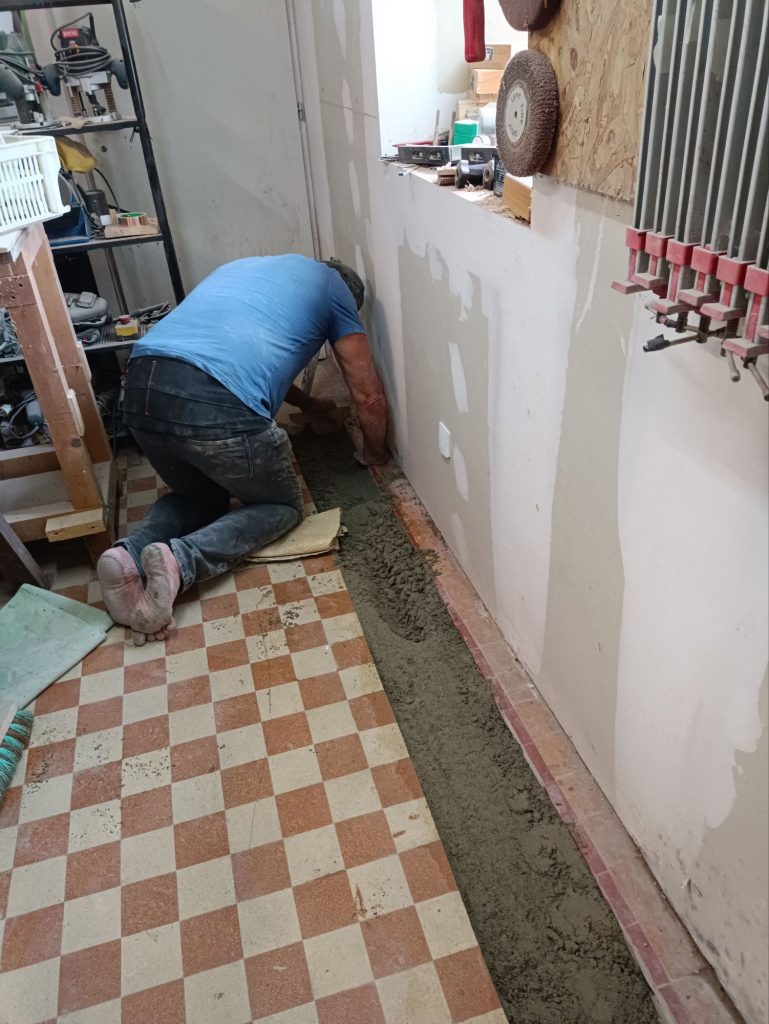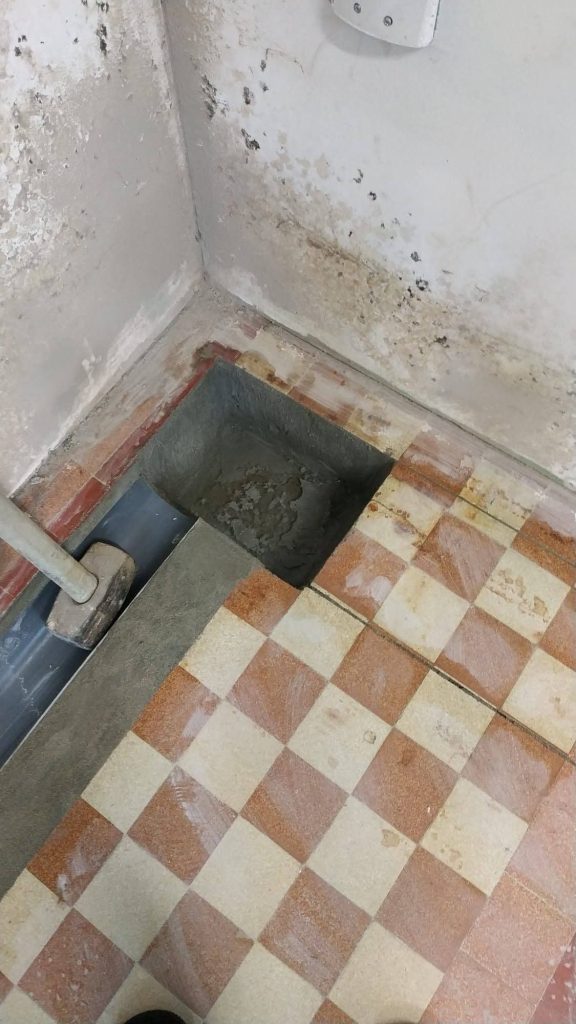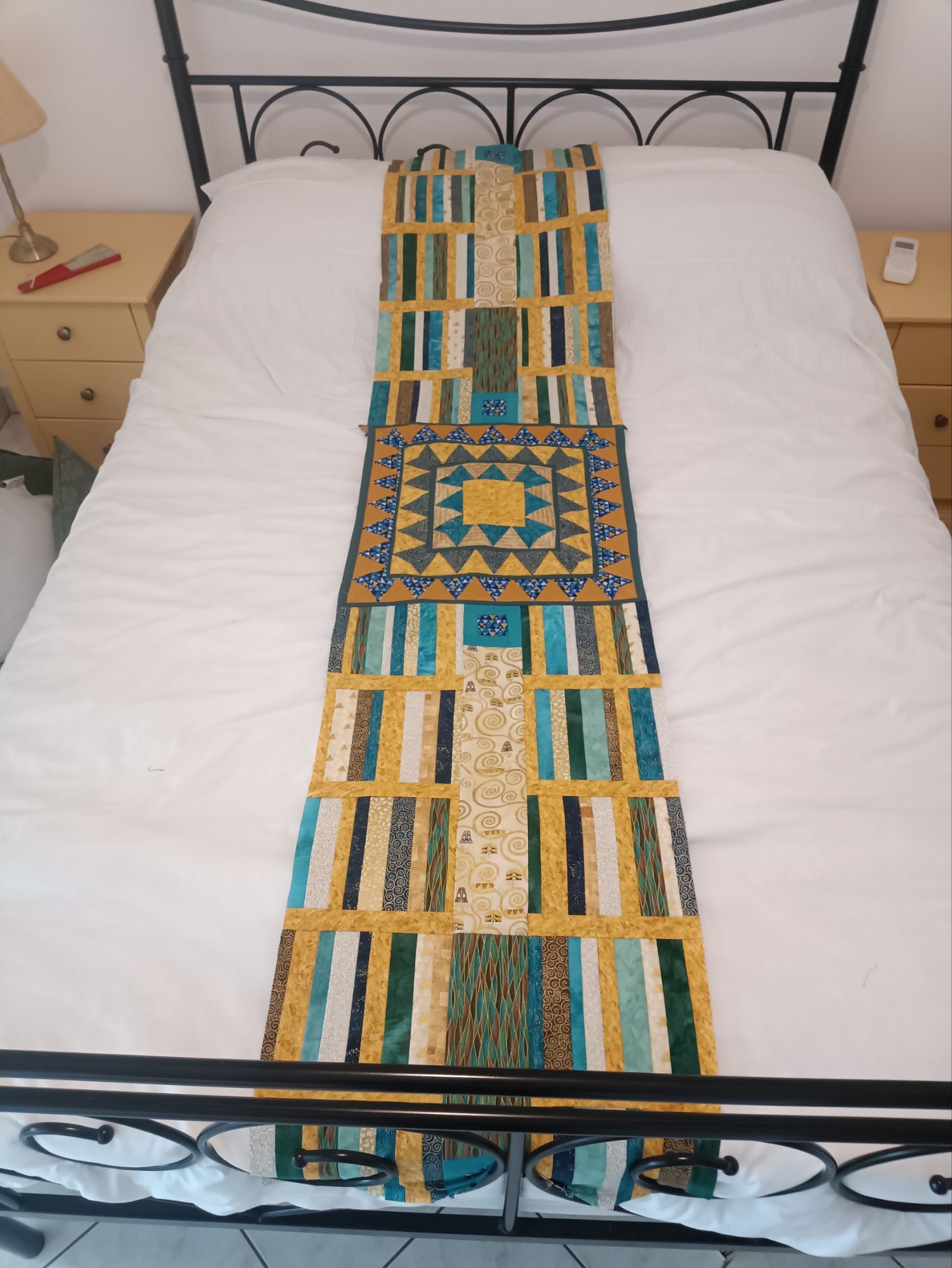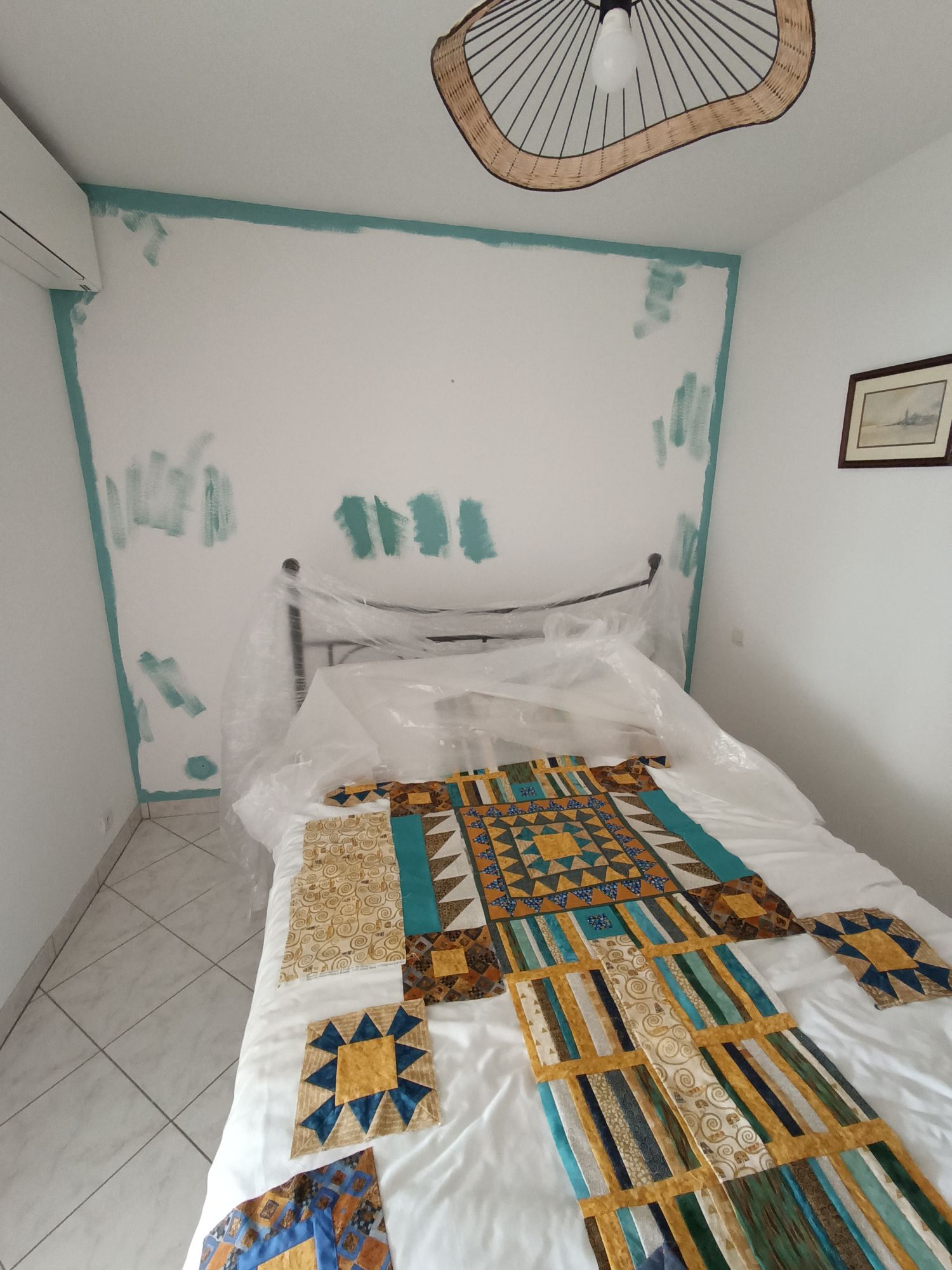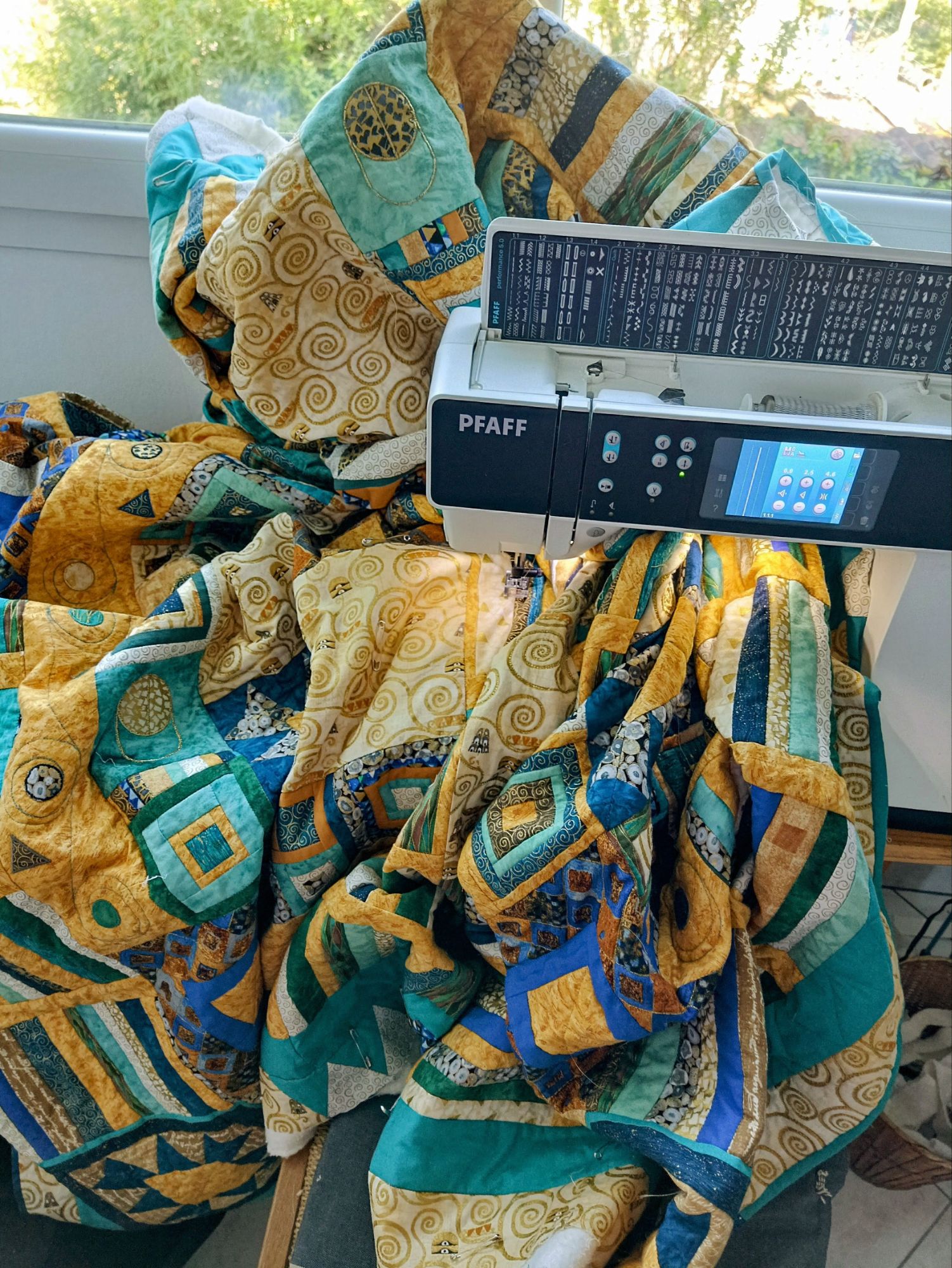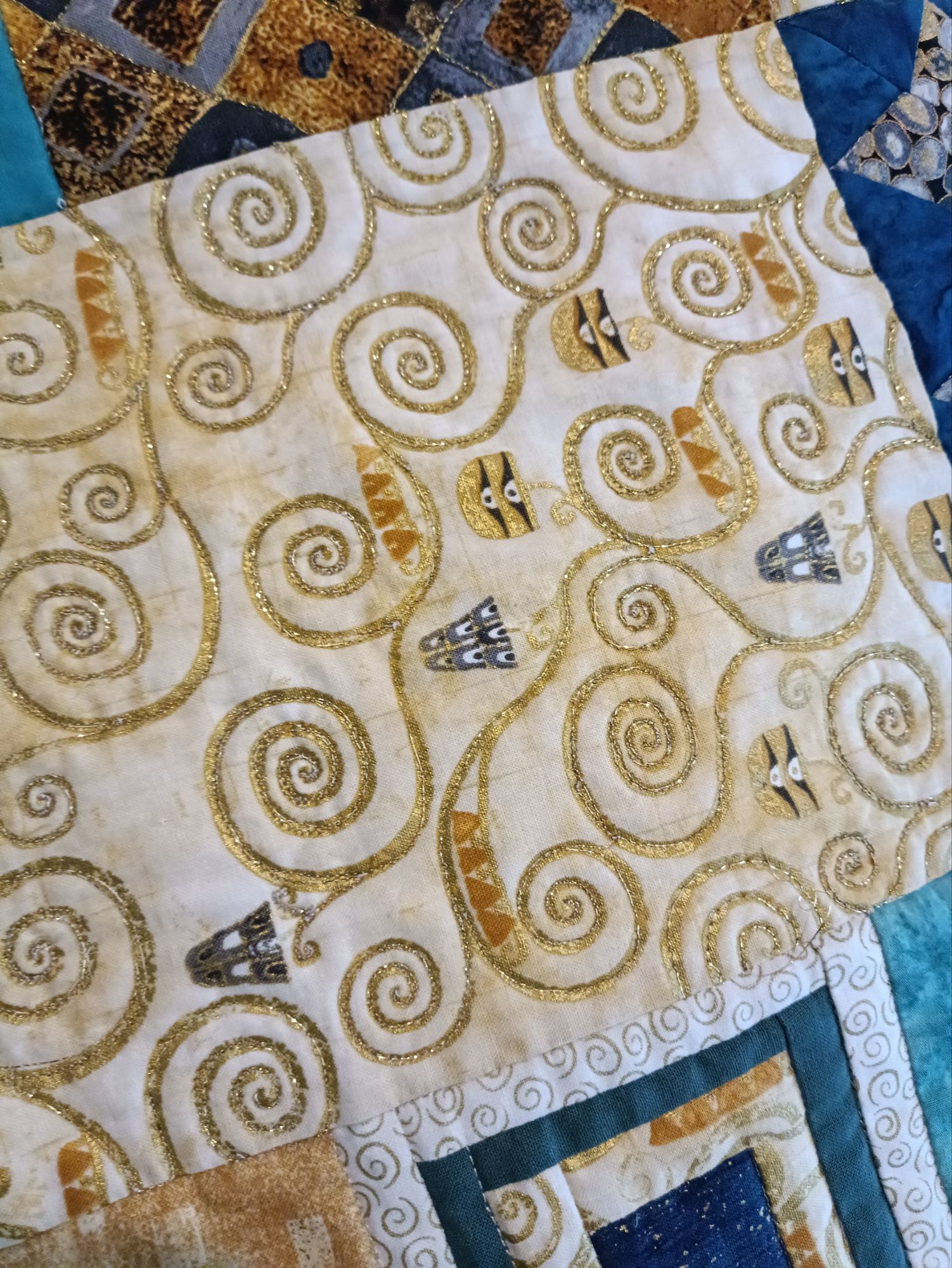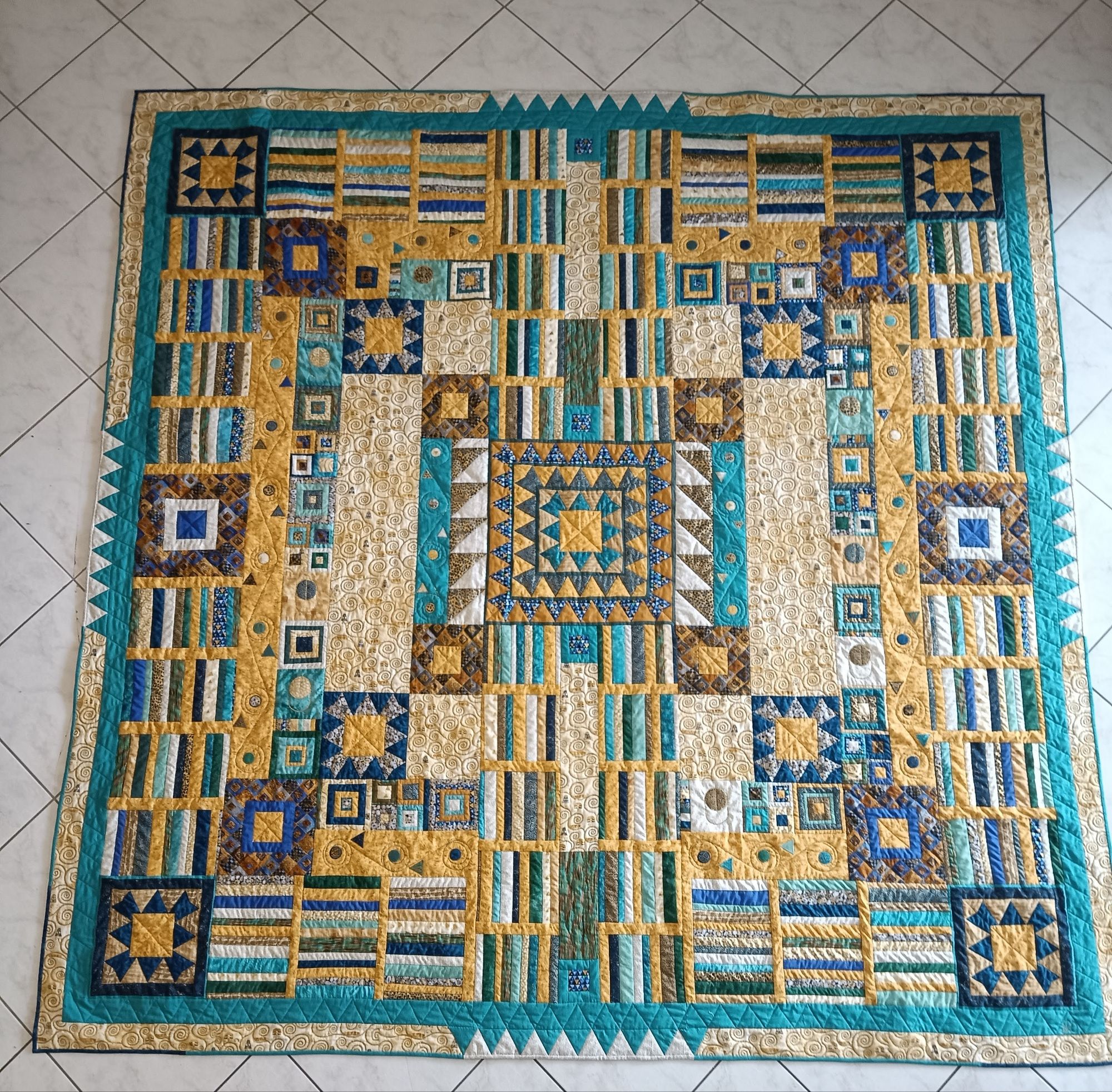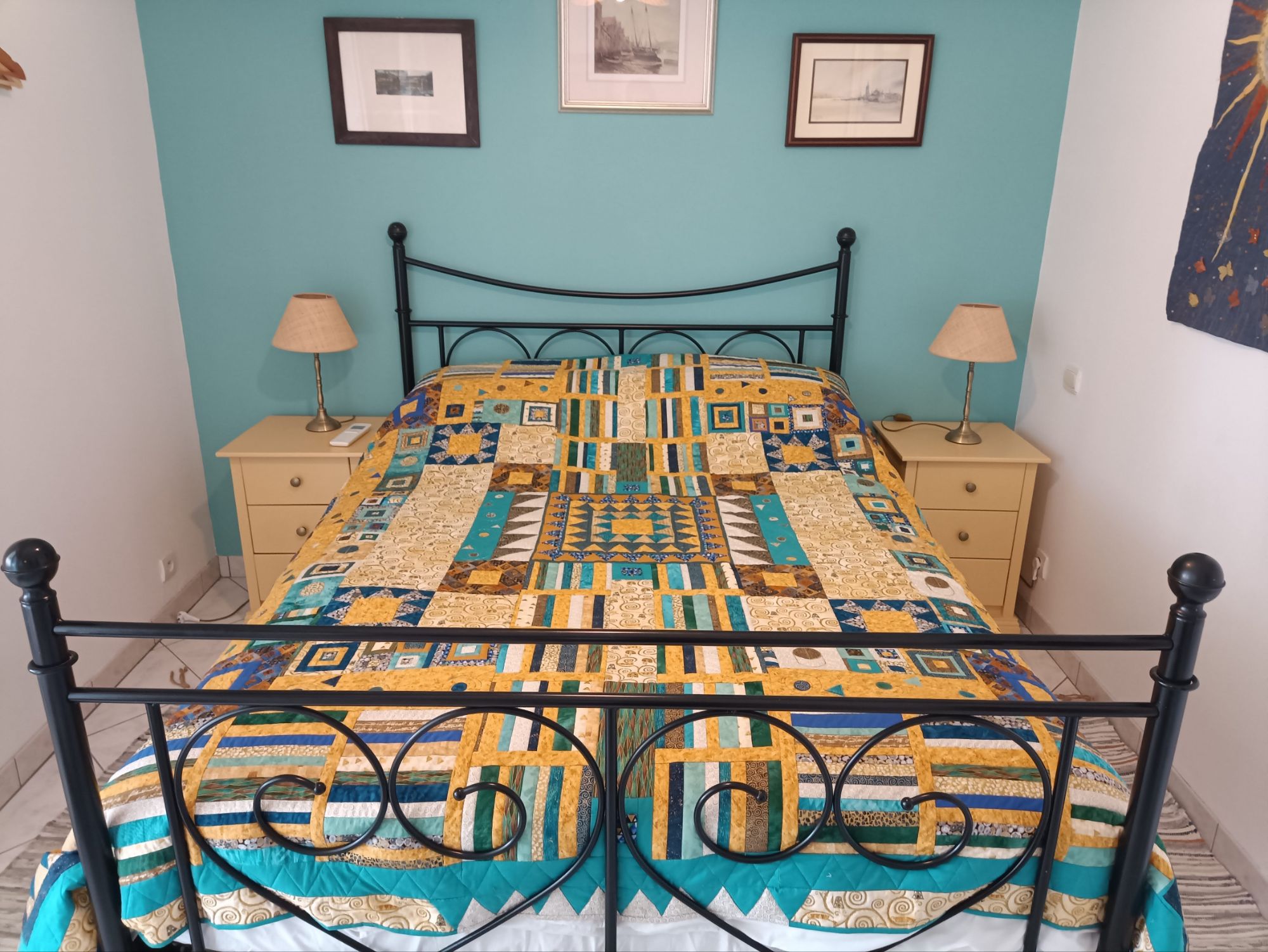After living all my married life in houses that we were in the process of renovating, I really appreciate not having loads of DIY to do in my apartment. It’s quite fun to help others though, and being able to walk away from the dust and the rubble at the end of the day.
Adrian, the lead guitarist with the band, lives in a house at the foot of a mountain, on the edge of the Pyrenees; the terrain is so steep that the mountain comes halfway up the back of his house. His living space is on the first floor; the ground floor (if you look from the front of the house) is workshop and garage.
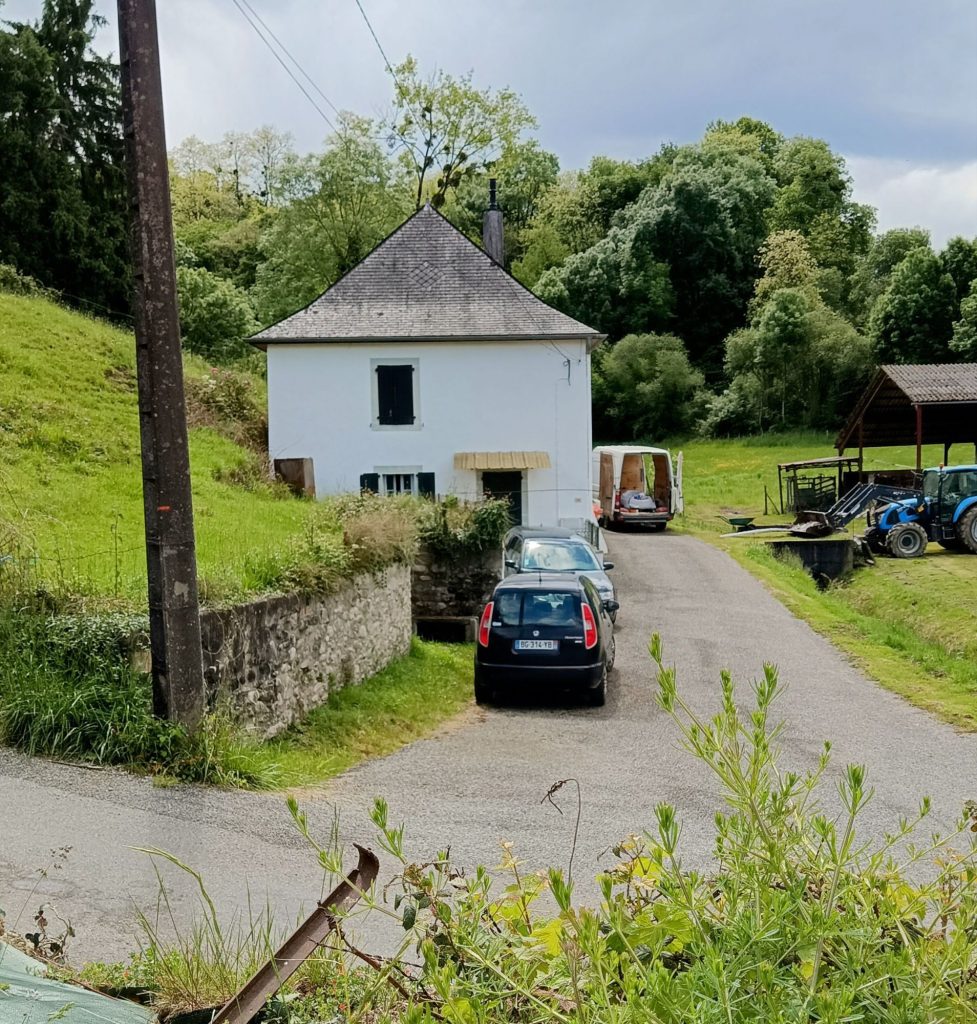
When it rains heavily the rain pours down the mountainside, straight through the back wall and into his garage and workshop, meaning that several times every year, the whole ground floor is flooded. Not ideal.
He asked a firm for a quote to fix this problem, but it was astronomical; they’d have to empty the place, dig a trench just inside the back and side walls (it seems that digging the trench outside is unfeasible) , and lay pipes, which would drain the water to the ditch outside.
Jean Marc, the drummer in the group, is a retired builder and Jean Michel, singer and guitarist, works in a builders’ merchants. They were horrified when they learned that Ade had asked someone else; why hadn’t he asked them? So Jean Marc spent a day at Adrian’s, assessing what needed doing, as well as the tools and materials he’d need. These were bought, using Jean Michel’s staff discount, and loaded into Jean Marc’s van.
I offered to provide lunch as I wouldn’t be much help with the building work and spent the previous day cooking; two chicken curries, one medium, the other barely spiced, for Jean Michel, who, like many of his compatriots, can’t cope with anything spicy. A chickpea and spinach curry, naan breads and a raita completed the main course, to be followed by the inevitable lemon meringue pie, without which I wouldn’t dare show my face at Ade’s. He got in rice and beers.
By the time I arrived they’d cut the trench in the workshop, the lower of the two rooms, and were starting to dig it out. The place was full of noise, dust and a very positive vibe. I even felt quite useful when they were looking for something; of course all the shelving and other storage was shoved together on one side of the room – I was the only one skinny enough to squeeze through the little gaps.
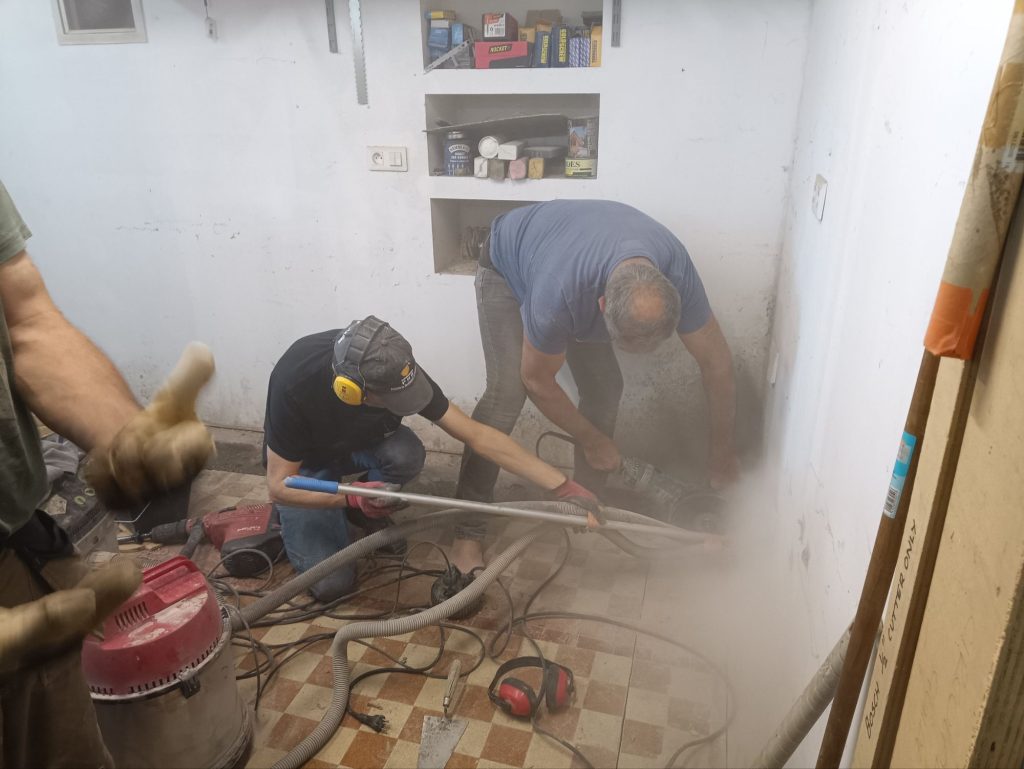
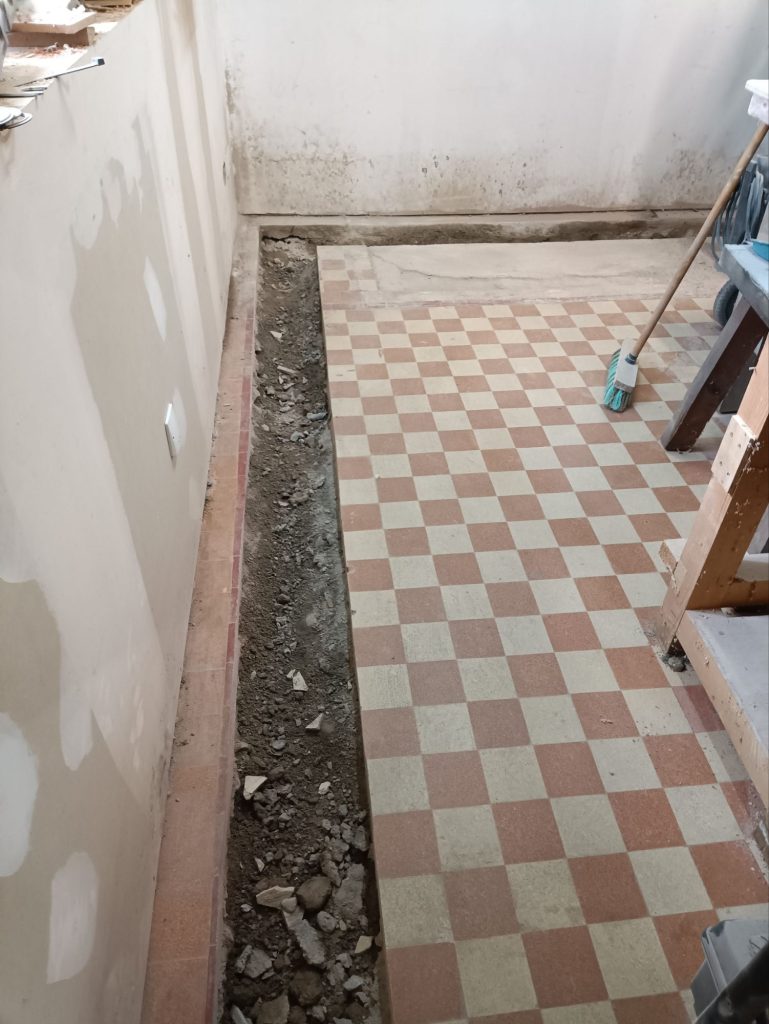
The farmer across the road brought his tractor, with a big digger shovel attached, so that they could dump the rubble in it; he’d find a hole to lose it in.
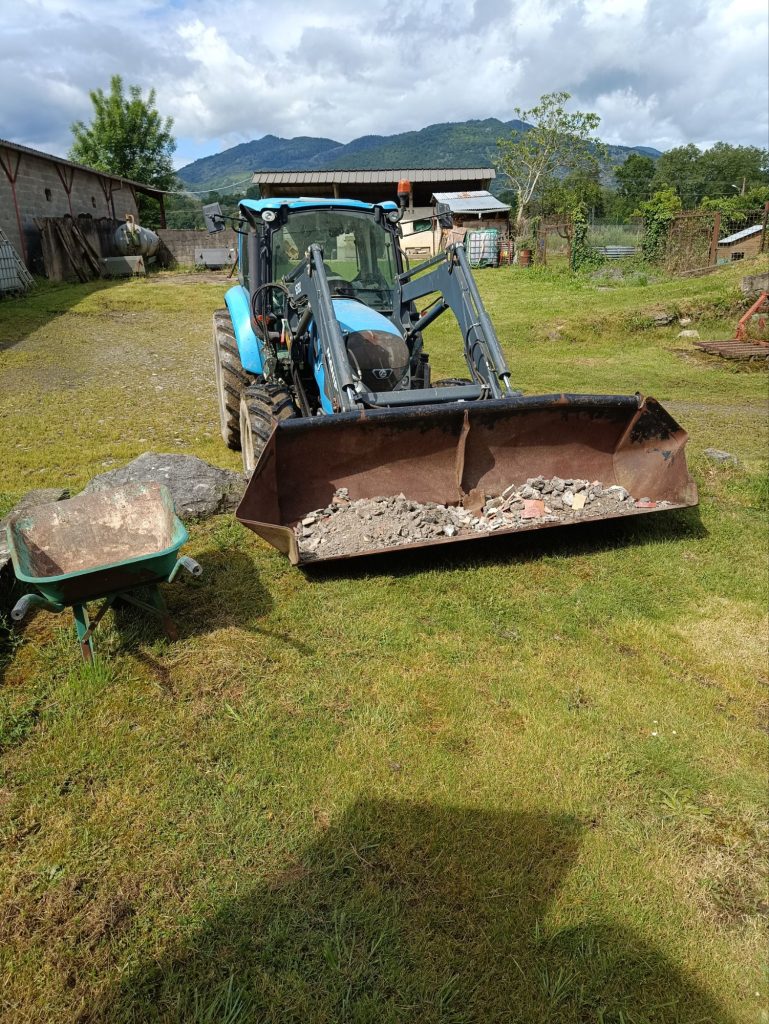
By lunchtime they’d dug out the trench and were hungry; they’d had an early start. We all tucked in and they all declared themselves full after two or three helpings, till I got out the lemon meringue pie, a big one, which they cut into four, demolishing most of it along with ice cream – I think they all have separate pudding compartments 🤣.
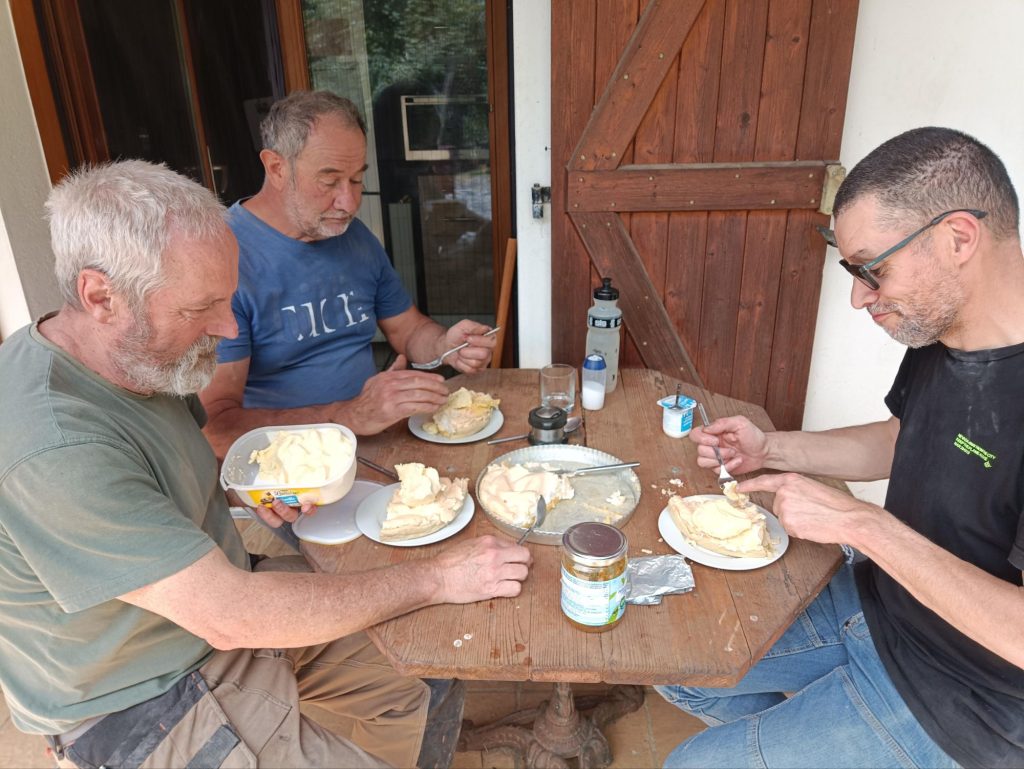
Then back to work, mixing the mortar to fill the trench and scraping a groove in it to match the half circle guttering that would collect the water. At the lower end they cut a rectangular hole, a bit bigger, to form a sump that will house a small pump.
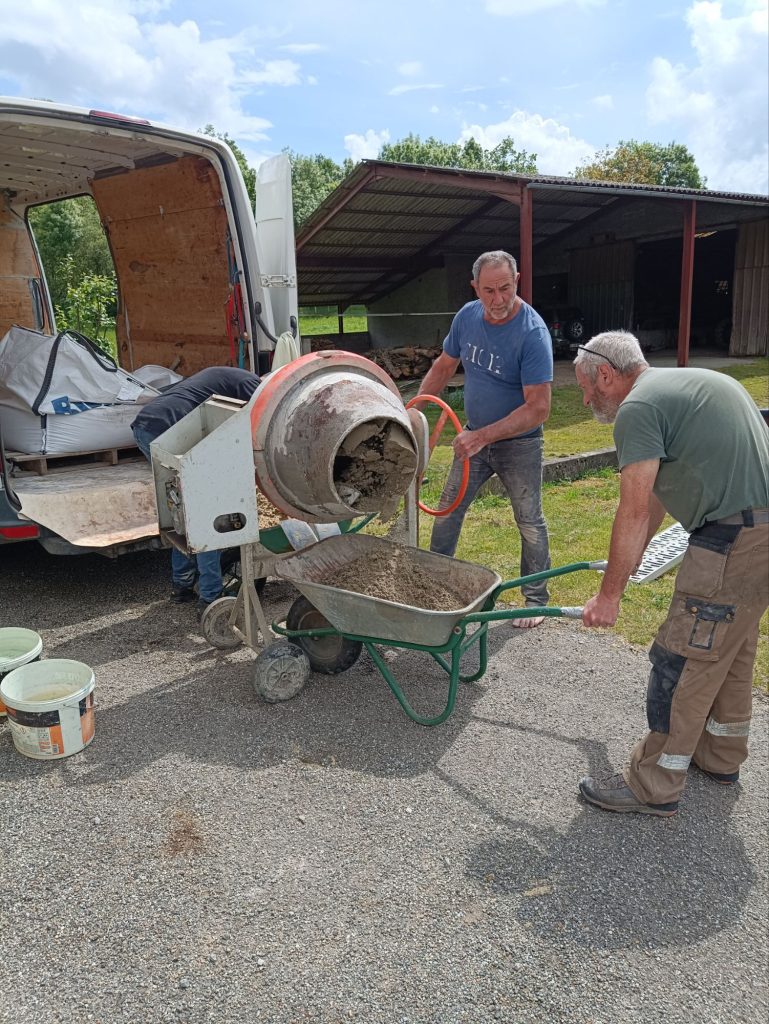
They hadn’t finished by the time I left, but the sky was turning very black and a storm was forecast. I had an interesting journey home with lightning flashing all around and rain coming in the windows, as they refused to close. Eventually I managed to close them, by pushing the “open” button; a problem with the electrics, I suppose.
For now, they’ve only done the lower room, the workshop, Ade will see if this sorts the problem and we’ll go back to do the second part later on, if necessary.
